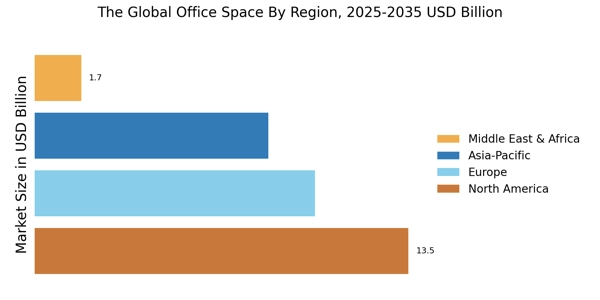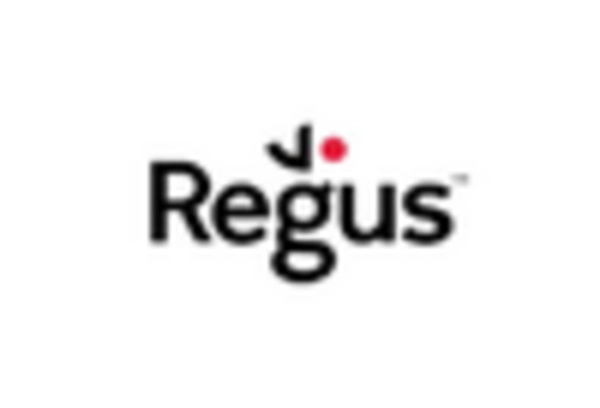Urbanization and Population Growth
Urbanization continues to be a significant driver of the office space market. As populations migrate towards urban centers, the demand for office spaces in these areas is likely to rise. Data indicates that urban areas are expected to house over 68% of the global population by 2050, which may lead to increased competition for office space. The Global Office Space Industry must adapt to this trend by developing innovative solutions that maximize space utilization and accommodate the growing workforce. This urban influx could also stimulate demand for co-working spaces, further diversifying the market.
Increased Demand for Hybrid Work Models
The shift towards hybrid work models appears to be a driving force in the office space market. Organizations are increasingly adopting flexible arrangements that combine remote and in-office work. This trend is likely to reshape the demand for office spaces, as companies seek to optimize their real estate portfolios. According to recent data, approximately 70% of firms are considering hybrid work strategies, which may lead to a reconfiguration of existing office layouts. The Global Office Space Industry is responding to this demand by offering adaptable spaces that cater to diverse work styles, potentially increasing occupancy rates and enhancing employee satisfaction.
Evolving Corporate Real Estate Strategies
Corporations are increasingly reevaluating their real estate strategies in response to changing workforce dynamics. The focus on cost efficiency and employee well-being is prompting businesses to invest in modern office environments that foster collaboration and innovation. Recent surveys suggest that nearly 60% of companies are planning to redesign their office spaces to enhance employee experience. The Global Office Space Industry is likely to benefit from this trend, as organizations seek to create environments that attract and retain talent. This evolution in corporate real estate strategies may lead to a surge in demand for high-quality office spaces.
Sustainability and Green Building Practices
Sustainability is emerging as a critical driver in the office space market. Companies are increasingly prioritizing environmentally friendly practices, leading to a rise in demand for green buildings. Data suggests that buildings with sustainable certifications can command higher rental rates and attract more tenants. The Global Office Space Industry is adapting to this shift by incorporating sustainable design principles and energy-efficient technologies into new developments. This focus on sustainability not only meets regulatory requirements but also aligns with the values of a growing number of environmentally conscious businesses, potentially enhancing market competitiveness.
Technological Advancements in Office Design
Technological advancements are reshaping the landscape of office design and functionality. The integration of smart technologies into office spaces is becoming increasingly prevalent, enhancing operational efficiency and employee productivity. Innovations such as IoT-enabled devices and advanced building management systems are likely to become standard features in modern office environments. The Global Office Space Industry is responding to this trend by incorporating these technologies into new developments, which may attract tech-savvy tenants. This focus on technology could also lead to increased investment in office spaces that prioritize connectivity and user experience.


















Leave a Comment